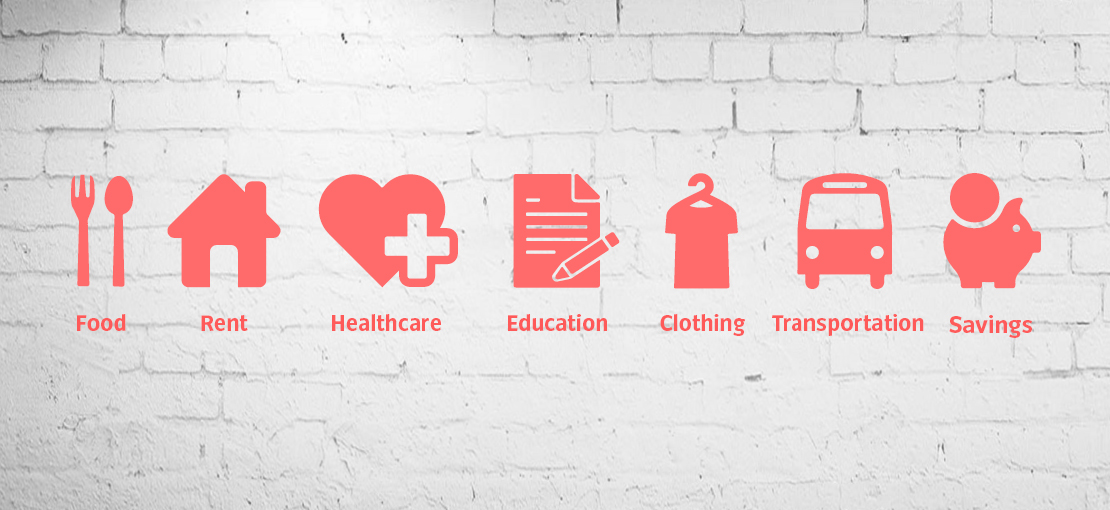
Fair wages for your VAUDE products
In order to implement this at our production sites, we obligate each of our producers to pay a living wage. The obligation is as follows:
Wages and benefits paid for a standard working week shall meet or exceed legal or industry minimum standards and always be sufficient to meet basic needs of workers and their families. In addition, some discretionary income (i.e. for savings) must be provided. Overtime must be remunerated separately, with the statutory surcharges. Other legal wage components such as paid vacation and holidays or special wages must be guaranteed.
An obligation in and of itself is not enough, of course. Therefore, all our producers are regularly monitored by independent Fair Wear auditors who carefully examine the remuneration of employees. This is done by checking payroll records and working time records. Interviews with workers are conducted for confirmation. VAUDE receives a detailed list of payment figures with local and international benchmarks. This helps us to quickly recognize the wage levels of our producers.
According to the OECD Due Diligence Guidance for Responsible Supply Chains in the Garment and Footwear Sector, wages are an industry risk. We have identified the following risks for our supply chain:
- Payment below the minimum wage during the probation period in Myanmar.
What are we doing about it? Our producers have committed to paying the minimum wage from the onset of employment. This has been implemented and is regularly monitored.
- Incorrect calculation of overtime wages.
What are we doing about it? We’re engaging in dialogue with our producers and working together to make improvements.
- Various absences are not properly compensated.
What are we doing about it? We’re engaging in dialogue with our producers and working together to make improvements.
- Wages do not cover the cost of living for workers and their families.
What are we doing about it? Wages ranges are collected through audits and annual wage surveys, and they are compared to Living Wage benchmarks. Additionally, we are working with pilot producers on transparent wage calculations to understand the labor costs associated with the product and determine if Vaude is paying its share for living wages.
The above-mentioned risks are potential risks with an increased likelihood of occurrence.
Overall, it can be said that Vaude does not have significant issues regarding wages. However, when it comes to living wages, there is still work to be done. (See Risk Overview.)
Fair Wear audits results
Inspections carried out by Fair Wear show that wage levels are usually above the statutory minimum. Nevertheless, at all audits carried out by Fair Wear included objections regarding "payment of a living wage", and deviations from the Living Wage Benchmark were uncovered. This benchmark is being advanced because the minimum wage in many countries is not sufficient to provide a decent standard of living.
In countries where the Global Living Wage Coalition's benchmark (calculated using the Anker methodology) is available, we rely on it and compare it with the wages paid. Unfortunately, comprehensive benchmarks for living wages are not yet available for all countries and regions.
What our producers pay
Wages of our producers audited in 2022

Wages at our production sites in Vietnam:
There has been a new benchmark for fair wages in Vietnam since 2016. This was increased by the Global Living Wage Coalition (GLWC) using the Anchor methodology. Where the Anker Benchmark is available VAUDE commits to the Anker Benchmark. Read more here. This benchmark applies to Region 1 and Region 4. For regions 2 and 3, we have extrapolated the benchmark in proportion to the minimum wages.
You can find wages of production sites in Vietnam that were audited in 2022, in relation to minimum wage and the Anchor Benchmark for fair wages here. The Anchor Benchmark was updated in 2020. We extrapolated it with the inflation rate, consumer prices of the World Bank, so we have an actual value for 2022.
We've decided to represent wages in PPP$ rather than local currency. Why?
Wages in different countries of production can’t be compared if they're listed in the local currency because it is never clear how much things cost there. For this reason, we have converted wages and minimum wages into their purchasing power. We have used the World Bank's conversion factor.
Wage data is collected by the Fair Wear in audits. We do not have figures on the starting wage per department. The Fair Wear only collects the lowest, highest and average paid wages in a department (gender-specific data is not collected). The wages represented here are average pay for the most common job in the sewing department.
Because each producer is usually audited every 3 years, we also only had updated data on wages every 3 years. In 2018, we started recording the wages paid at all of our producers annually. The evaluations haven’t been published yet, as the results haven’t been verified by independent third parties. They are currently serving us for internal purposes only. Based on these annual figures, we have an overview of wage levels and can continue to work with our producers on this issue.
Our Commitment
The issue of a living wage can't be solved by VAUDE alone. We are just one of many customers at these production sites. Therefore, we are working hard on the issue with other brands and Fair Wear. We are also working with our producers to find joint solutions in order to make progress.
| GRI: | 202-1 |




